Hydroponic Deep Water Recirculating Systems: Maximizing Efficiency in DWC
In the realm of hydroponics, recirculating deep water culture represent a pinnacle of efficiency and effectiveness, especially in Deep Water Culture (DWC) setups. These systems, pioneered and popularized by innovative growers like Heath Robinson in the late 90s, offer a sustainable approach to managing nutrient and water supply for hydroponic gardens. Let’s delve deeper into the mechanics and benefits of these systems.
1. Understanding Recirculating Hydroponic Systems
Unlike traditional DWC setups where nutrient solutions are static, recirculating hydroponic systems constantly move the nutrient-rich water through the system. This dynamic flow ensures that plants receive a steady supply of nutrients and oxygen, which is crucial for optimal growth. The continuous movement also prevents the stagnation of water, reducing the risk of root diseases commonly associated with static water cultures.
2. The Heath Robinson Approach to Recirculation
Heath Robinson’s approach to recirculating systems was groundbreaking. By integrating a high-flow recirculation method, he demonstrated that plants could achieve faster growth rates and higher yields. This method keeps the nutrient solution in constant motion, ensuring that oxygen levels remain high and nutrients are evenly distributed, leading to healthier, more robust root systems.
3. Benefits of Recirculating Systems in DWC
The advantages of using a recirculating system in DWC are numerous:
- Enhanced Oxygenation: Continuous water movement increases dissolved oxygen levels, crucial for root health.
- Even Nutrient Distribution: Recirculation prevents the formation of nutrient hotspots, ensuring that all plants receive an equal share of nutrients.
- Water and Nutrient Efficiency: These systems use water and nutrients more efficiently, reducing waste and the frequency of nutrient solution changes.
- Temperature Control: Recirculating water can help maintain a more consistent temperature, which is vital for plant growth.
4. Setting Up Your Own Recirculating DWC System
Creating your own recirculating DWC system involves a few additional components compared to a standard DWC setup, but the payoff is well worth it. You’ll need a reliable water pump, proper tubing, and a system design that allows for easy access and maintenance. It’s important to ensure that your pump is powerful enough to handle the volume of your setup and that your tubing is arranged to allow for uniform circulation.
5. Challenges and Solutions in Recirculating Systems
While highly efficient, recirculating systems do come with their own set of challenges. Keeping the system clean to prevent clogging and ensuring the pump and other mechanical parts are functioning correctly are vital. Regular checks and maintenance can help prevent most issues. Additionally, monitoring the nutrient solution for pH balance and nutrient levels is crucial for the health of your plants.
In conclusion, integrating a hydroponic recirculating system into your DWC setup can significantly enhance your growing experience. Not only does it lead to healthier plants and higher yields, but it also makes for a more sustainable and efficient gardening practice. Whether you’re a hobbyist or a commercial grower, the benefits of a recirculating system in a DWC setup are too substantial to overlook.
Below is archived infiormation from Heath from the Overgrow and HG420 forums, describing in his own words how he does it! Enjoy!
DIY Deep Water Culture, The Recirculating Oxygen System
How do growers get away with growing their plants in water? Here I explain how Deep Water Culture works and how you can make it even better!

Some growers think deep water culture- drowning and it’s only suitable for certain aquatic plants. This is absolutely not the case. Deep water culture is actually a great way of ensuring your plants have continual
access to water; nutrients and oxygen all at the same timer The trick is getting the oxygen into the water- we call this process “aeration.
Many gardeners are familiar with the need to have some form of aeration in their reservoir or nutrient solution — this is regardless of whether they are growing in a re-circulating hydroponics system or even soil.
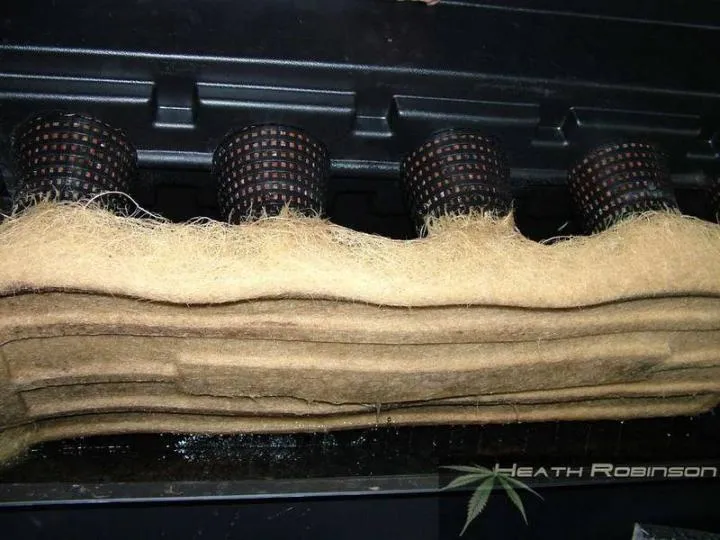
Aeration increases dissolved oxygen in the water; it is often one of the most overlooked aspects of an indoor garden but yet is one of the most important. Dissolved oxygen is required in the respiration of all roots and is used in the process of converting nutrients.

Insufficient oxygen levels, dramatically reduce the permeability of roots thus reducing their ability to absorb both food and water.
Dissolved oxygen concentrations are usually measured in units of milligrams of gas per liter of water – mg/L. (The unit mg/L is equivalent to parts per million ~ ppm).
Oxygen Deficiency
Oxygen deficiency is often hard to diagnose as the symptoms look all too familiar. They usually start with wilting leaves which are often misdiagnosed as under or over-watering. Signs are most common in the middle of the day when the temperature is at its highest.
This is because the maximum amounts of dissolved oxygen are relative to the water temperature. Colder waters are able to hold more dissolved oxygen. A fully aerated solution at 20C/68 F is capable of holding around 10 – 11ppm; at 30C/86F it is limited to around 7ppm Plants often show signs of 02 deficiency.
When the rate of photosynthesis is at its highest and the availability of dissolved oxygen is at its lowest In severe cases wilting is often followed by a dramatically decreased rate of photosynthesis and limited carbohydrate transfers.
Plant growth is stunted and roots will start to deteriorate and turn brown. Mineral deficiencies then become apparent in the leaves and continued exposure will result in a collapse of the cells of the root. Over time this collapse may cause the root area to become anaerobic as the organic material decomposes, pathogens are then able to
take hold and kill the host.
How Are Plants Able To Grow When Their Roots Are Completely Submerged In Water?.
In the image below you can see how high the water level was on the blue grow tub.
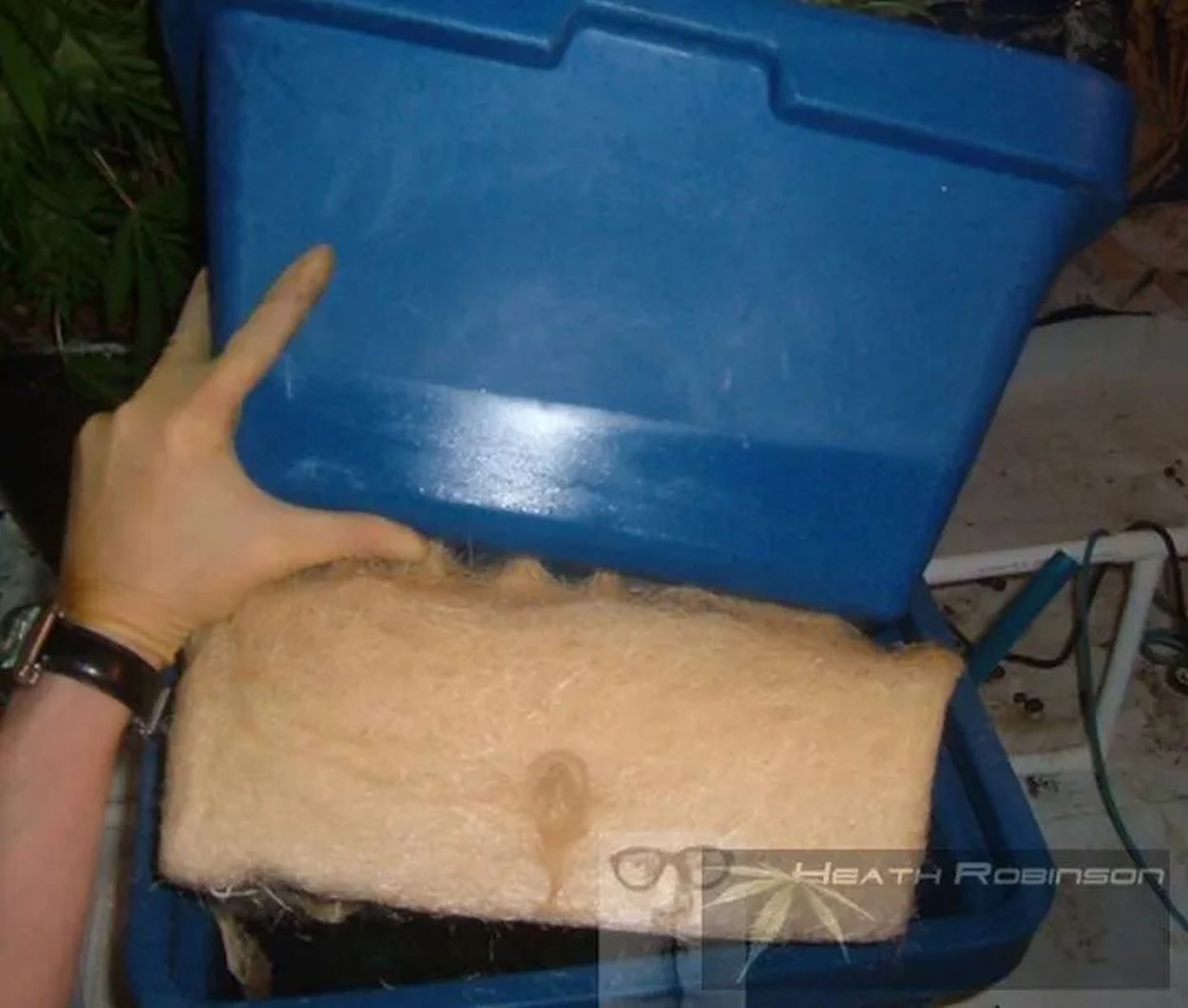 Roots are able to meet their oxygen requirements from either the 02 in the air or through dissolved 02 in the nutrient solution. The dissolved oxygen content of above 4 to 5 mg/L (4 to 5 ppm) is required to sustain respiration and enable nutrient conversion. Extremely rapid root growth is recorded in water with a dissolved
Roots are able to meet their oxygen requirements from either the 02 in the air or through dissolved 02 in the nutrient solution. The dissolved oxygen content of above 4 to 5 mg/L (4 to 5 ppm) is required to sustain respiration and enable nutrient conversion. Extremely rapid root growth is recorded in water with a dissolved
the oxygen concentration of above 9 mg/L (9 ppm).
So Are DWC Systems Any Good?.
Deep Water Cultivation DWC systems are extremely effective when the dissolved oxygen level is kept at a high level. This type of system is comparable with authentic aeroponics in the sense that both provide a continuous supply of oxygen, nutrients, and water at the same time. There is no wet and dry period just continuous growth.
How Do I Increase My Dissolved Oxygen Levels And Get The Most Out Of My System?.
Oxygen is dissolved/absorbed at the surface of the water and aeration occurs naturally in systems that allow the water to return back to the reservoir and also where pumps are used to agitate the water. The most effective way to increase the dissolved oxygen level is by using a method that increases the surface area of the liquid.
The two most productive methods are:
1, Atomising the liquid into small droplets as seen in aeroponic systems. By turning the water into small droplets it is possible to increase its surface area.
Filtering air bubbles through the water drastically increases the surface area of the water that is in contact with the available oxygen. The surface area of the water is not restricted to the top, it can be anywhere that the air is in contact with the water;
Creating large bubbles is a false economy as this provides the least amount of surface area per liter of air that is provided. to the water. It is far more effective to use a smaller air pump along with air stones that produce small Champagne-like air bubbles, this will provide a much greater surface area compared to large air pumps that pass large volumes of air through the water in large bubbles with a relatively small surface area. Fine ‘ champagne-like bubbles are far more effective at aerating your nutrient solution than large bubbles due to the increased overall surface area.
Fine’champagne-like bubbles are far more effective at aerating your nutrient solution than large bubbles due to the increased overall surface area
2, Recirculating your nutrient solution: see below
How To Make Your Own DWC System At Home!
The Shopping List.
1 ) A container or a suitable number of pots. The container/pots must be light proof, and capable of holding a liquid; they must also be strong enough to support the weight of the plants at full maturity. Select a container or pots that have removable lids as this will be required to monitor and maintain the reservoir.
2) An air pump and manifold Silent diaphragm air pumps are the best options; they are very low wattage, often between 15 and 40 watts for 1200 to 5000 liters per hour: Many of them are also designed to be operated continuously.
3) Air stones or diffusion tubing Ceramic air stones are excellent at producing micro-fine bubbles although these require more air pressure so be careful not to overload your pump.
4) Airline Select the airline size that matches your air stone and air pump connections. These are usually 4 to 8mm depending on the size.
5) Heavy-duty net pots. Select a pot size that will support your plants to maturity.
The Fittings, Products, and Tools used for this video are as follows: 20L Bucket and lid (Black)
140mm Net Pot
4mm Airline tubing
Elite 800 air pump
15mm Green food grade tubing
15mm Grommet
4″ Round airstone
Drill
hole cutting/enlarging bit
140mm Hole cutter
4mm drill bit
The Tool Bag
1) A hole saw – Hole saws can be purchased from DIY shops or specialist stores, select one with a diameter roughly 1 to 2 cm smaller than the net pots.
2) An electric drill
3) A drill bit – (The drill bit should be the same width as the airline).
Instructions.
1 ) Cut out a hole or multiple holes into the lid of the container/pots using the hole saw and drill This is where the plants are going to be positioned so make sure they have adequate space. Cut out holes that are slightly smaller than the pots. This will stop the pots from falling through the lid and will provide support for the
plants.
2)Drill a Hole in the side of the container or pot. Position the hole as near to the top as possible. Make sure the hole is large enough for the airline to pass through. (Putting the pipe through the lid will cause problems when emptying and refilling the container).
3) Position the air stones at the bottom of the container or pots and connect these to the air pump via the outlet or manifold.
Important note: Keep the air pump above the reservoir or install a non-return valve between the pump and reservoir. This will stop the force of gravity from pushing any water down into the air pump if it is turned off.
4) Fill the reservoir with a Ph-adjusted nutrient solution and turn on the air pump leaving it on 24 hours a day.
An aquarium heater may be required if the water temperature is likely to drop below 16c. Try to maintain a temperature of around 18 to 22c.
The Medium.
It is important to consider the medium carefully as young plants can dry out in a matter of hours. The two obvious choices are day pebbles and Rockwool. Both can be used successfully in a DWC system but each has its good and bad points.
• Clay pebbles are ideally suited to DWC but they lack the ability to provide young plants with enough liquid to survive for more than a few hours. When using clay pebbles it is advisable to install a drip system and timer that can feed the plants on a regular basis. The developing roots must be kept moist until they reached the
DWC reservoir
- Rockwool is generally easier to use due to its ability to hold water The main downfall or Rockwool comes from its extremely absorbent nature; it is likely to become saturated if splashed by the reservoir or if the reservoir is filled too high.
Additional notes.
If you are using small net pots, It is a good practice to keep a gap between the net pots and the deep water cultivation reservoir This gap will reduce the chances of damping off and will increase the respiration rate of the roots.
Ensure your chamber or pots are lightproof. If they are not; wrap them in a light-proof material, preferably white or reflective as this will also keep them cooler.
Installing a drainage tap will make the system easier to empty. Alternately a water pump could be used to pump out the liquid from the reservoir.
- Pre-mix the nutrient solutions to avoid damaging or shocking the roots.
- Top up the reservoir when required and completely change the nutrient solution at regular intervals. Larger reservoirs require less maintenance and tend to provide a more stable pH level.
- Maintain a lower than normal EC reading as the plants will feed continuously. (Unlike many other systems that operate with a wet and dry cycle).
How To Make A Turbo Charged DWC? Go Re circulation!
In the early nineties I was growing and experimenting with dripper systems, after running things for a while I noticed that if I increased the flow rate to the drippers the plants grew and flowered more quickly.
This led me to install bigger and larger bore dripper pipes, I had just modified one system before I went away for a week, and when I came back the plants were all much larger than expected but what I didn’t expect was the flow rate had been too high and as the roots had grown the roots had blocked the drain and were growing fully flooded! that’s when I had a eureka moment and went and bought some brewing and builders buckets and started experimenting.
The basic idea is very very simple you basically have a bubbler bucket but instead of having the nutrients just sit in the tub, you recirculate them at a high rate from an external rez so the nutrients are in continual motion.
Here is a Water farm bottom modified to recirculate the nutrients.
in this picture, you can see the water entering the bucket from the right through a half-inch fitting and exiting through a 1 1/2″ fitting this picture shows nicely the sort of flow I like to have through the buckets.
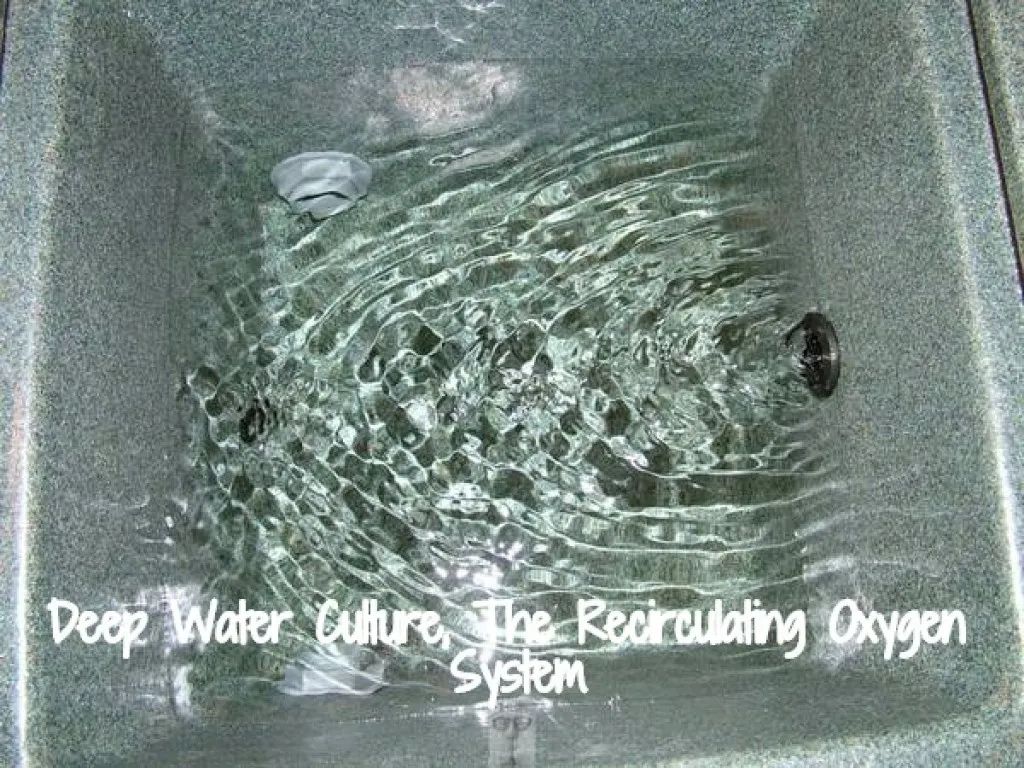
The level in the rez is set so that the water level in the bucket is touching or a couple of inches above the bottom of the inner bucket (the one with the holes drilled in it). The reason for this is I don’t like cord roots (the type you see in bubbler bucket grows) to me this is wasting root space.


Here are some pics showing what I mean, these aren’t my pics I am only using them to illustrate my point. If you look closely you can see that the roots nearest the bottom of the pot are like cords, this type of root develops when you have a gap between your nutrient level and the pot. I prefer not to have this type of root system as the cords do very little other than supporting the weight of the roots below.
DWC + Recirculation will help increase your yields dramatically, it’s very simple to achieve you simply add a remote reservoir install a pump, and recirculate the nutrient solution as per the excellent cad drawing below how the recycling system works, it is a very simple system.
The first drawing shows the level in the grow bucket set by an external rez, this is useful if you want to drain your system as it simply drains to the rez by gravity. : )
And the second plan shows a system which is easier to set up as the liquid height in the bucket is set by the return pipe from the rez, the system is slightly less versatile than the system above because you cannot change the liquid level in the tank and its a little more difficult to drain for cleaning, etc but performance wise its identical.

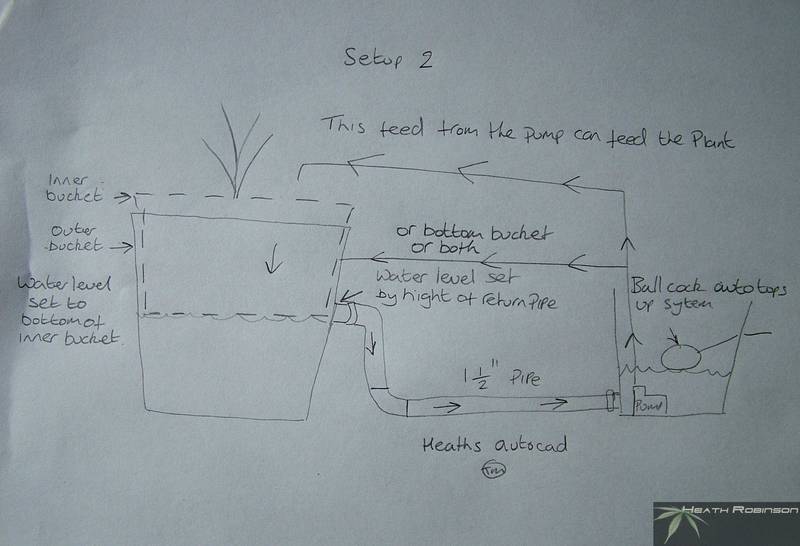
Here are a few examples of recirculating systems based on my designs:
Modified Recurculating GH Aquafarm with serious seeds Chronic.
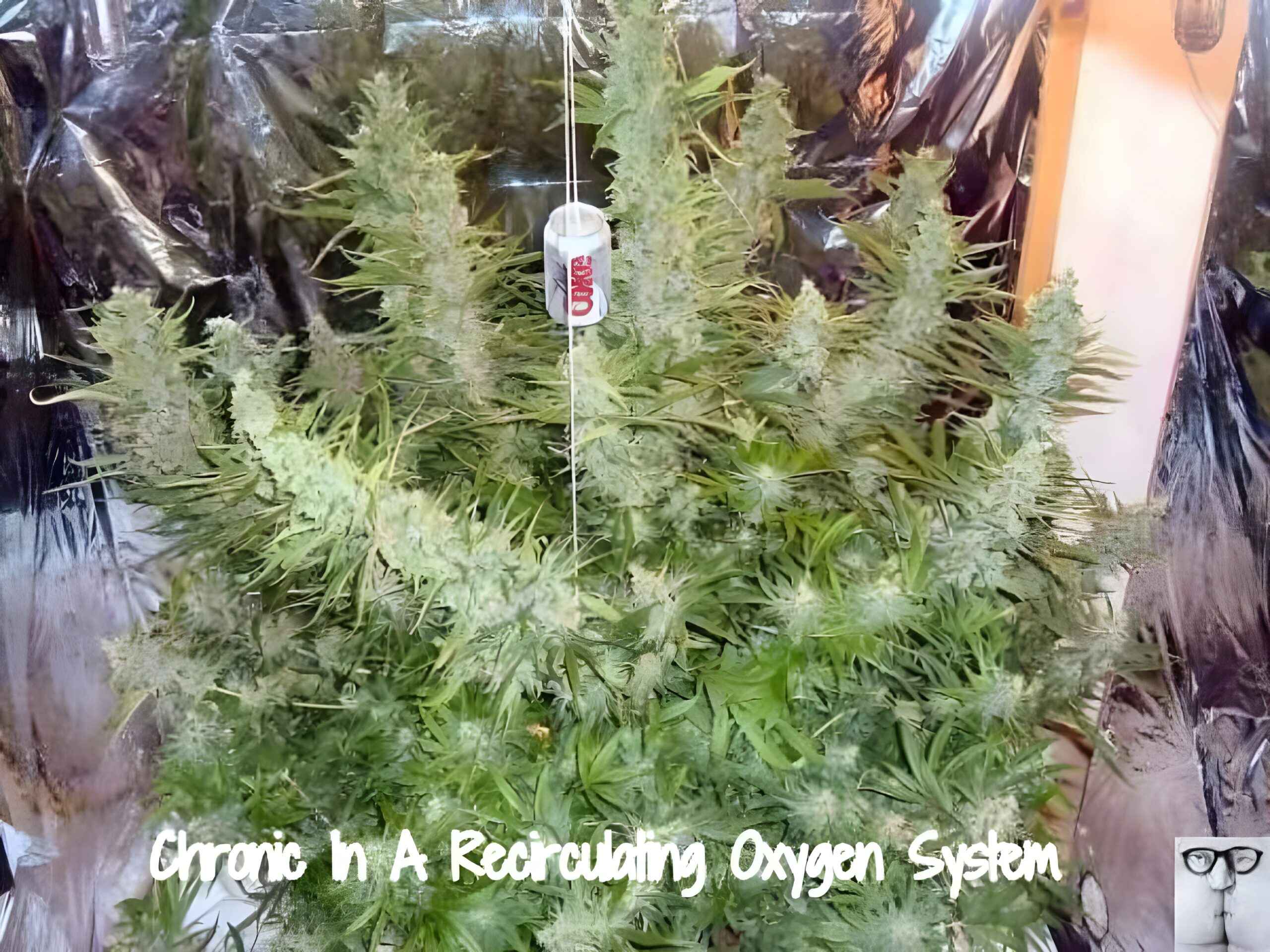

In 2007 DLA used the system and posted the pics in my thread, his pictures illustrate well how the recirculating system can be used to grow smaller plants. (Thanks DLA).
In this first pic, you can see clearly the small bore pipe feeding the bucket and the larger bore pipe returning to the rez.
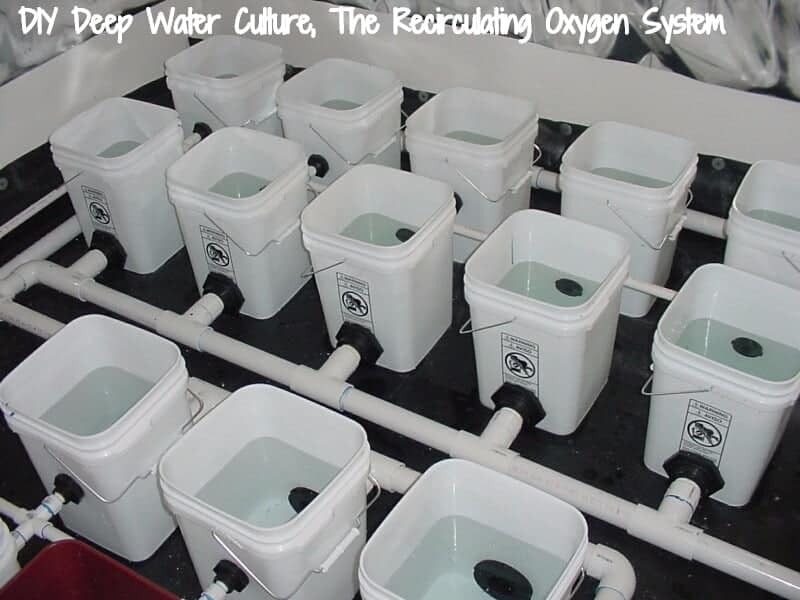
Inner buckets fitted.
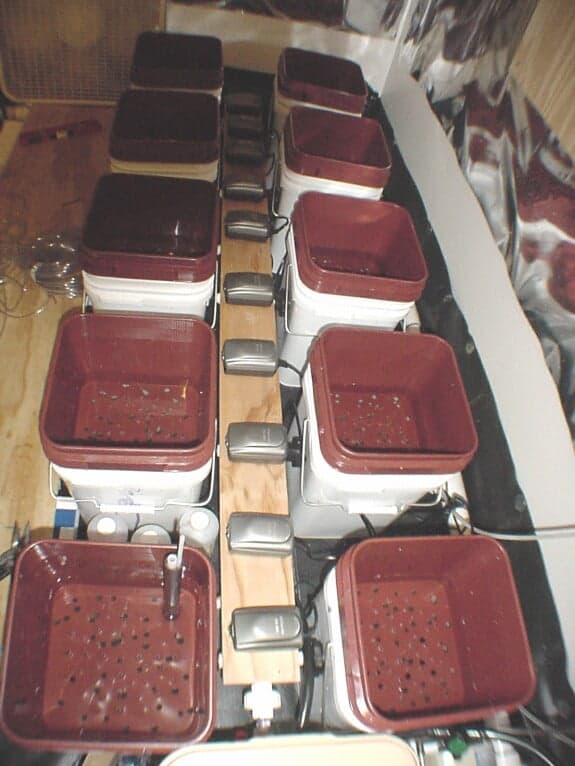
Plant newly installed.
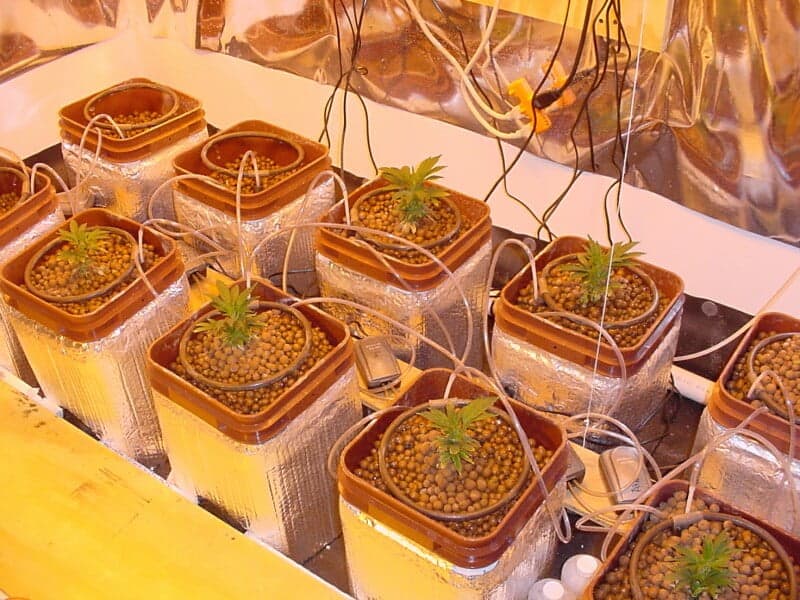
2 weeks of veg and 2 weeks of 1/12.
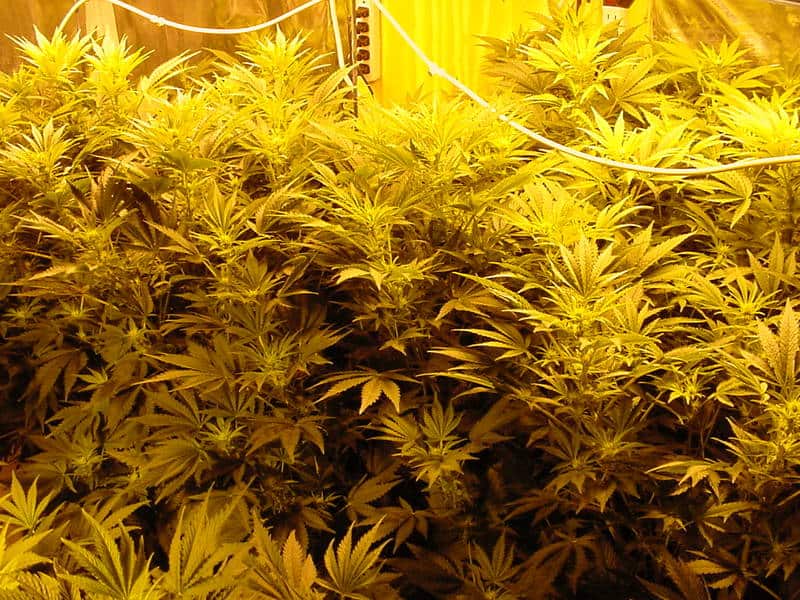
And another grow from 2006 shows the positronic strain “Viking” in veg running in modified recirculating Aquafarms.
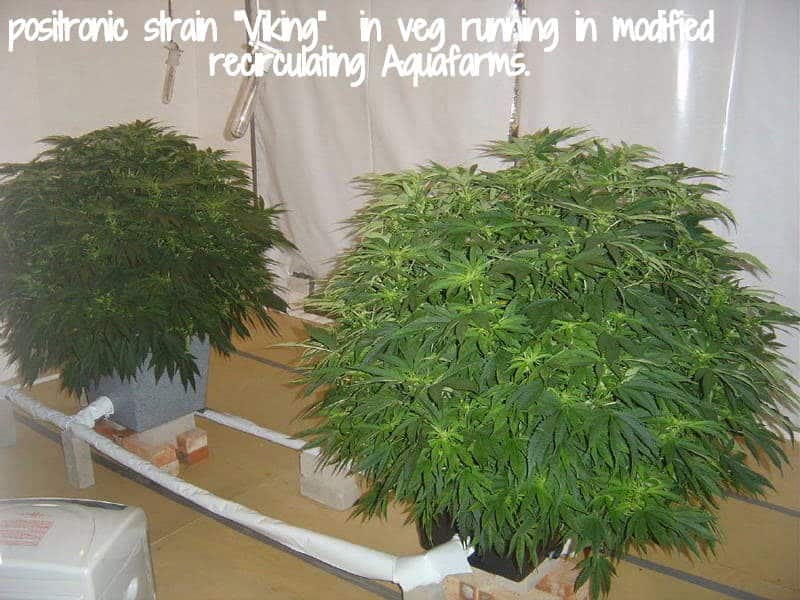
DWC Facts.
- Higher levels of dissolved oxygen speed up corrosion in water pipes. For this reason, water suppliers provide water with the least possible amount of dissolved oxygen. Quite often tap water contains
insufficient levels of dissolved oxygen to sustain growth.
• Pythium typically thrives in oxygen-deficient and anaerobic water. !
- For those of you interested in Aquaponics (keeping fish and plants in a hydroponic system) A typical healthy stream contains a dissolved oxygen level of around 5 ppm.
A dissolved oxygen level above 14 ppm can cause “gas bubble disease” which is fatal to fish. Aquatic invertebrates are also affected by gas bubble disease but at levels higher than those lethal to fish.
Ok just to make things as clear as mud here is a summary of what’s been discussed so far.
Dissolved oxygen (DO) is one of the single most important factors in hydroponics. If DO concentrations are low plants cannot take up nutrients, they will grow slowly or not at all, and they will be susceptible to disease. where concentrations are very low, plants may die from a lack of oxygen.
Wherever water is in contact with the atmosphere, oxygen from the air will enter the water until the pressure of oxygen in water and air are equal. This is known as equilibrium or saturation. The concentration of DO at saturation increases with increasing pressure and decreases with increasing water temperature.
When water contains less oxygen than the saturation concentration, oxygen from the atmosphere diffuses into the water, Oxygen will be added to a recirculating system at almost any point where the water surface is in contact with the atmosphere.
The addition of an air stone can be useful but not in the way that most growers think. If the recirculating water is at full saturation then the addition of airstones won’t make any difference whatsoever. if the water is low in DO for whatever reason, then the addition of an air stone would increase DO simply by the action of moving the water and allowing more contact area at the water’s surface as I mentioned earlier “Wherever water is in contact with the atmosphere, oxygen from the air will enter the water until the pressure of oxygen in water and air are equal”. This can also be achieved by simply placing a small submerged pump in your rez.
Good diffusers and Protein skimmers will add Do because of the small bubble size they produce, typically less than 1 millimeter (mm) in average diameter, compared to 3 to 5 mm or more for aquarium-type air stones. For example, decreasing the bubble size from 2.4 mm to 0.4 mm would increase the contact area between the air and water by a factor of five. An additional benefit of small bubbles is they take much longer to rise. A good diffuser will supersaturate your water which won’t directly benefit the plant as it can’t use the extra DO but it might indirectly help by increasing the numbers of beneficial bacteria and reducing harmful ones.
I hope that helps clears things up because we are in danger of sending everyone who looks in to sleep
Heath

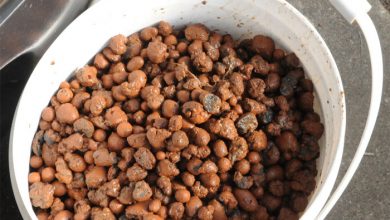
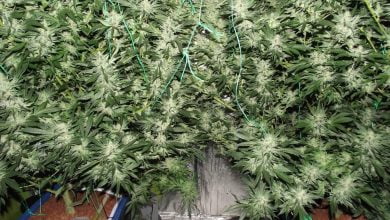
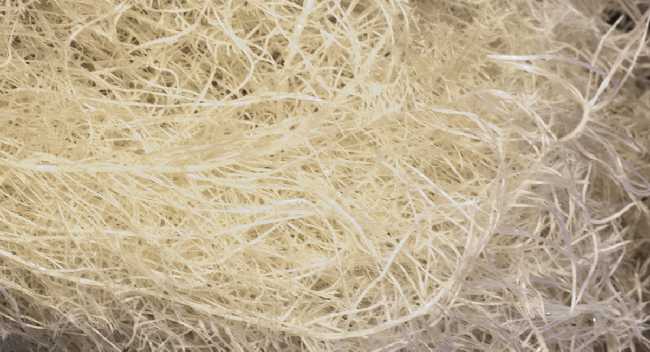
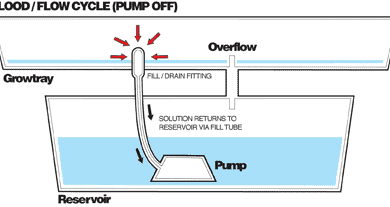
Great job Dizzy!
I hope you dont mind me putting your pics up here. As you have found once you get the recirculating system dialed in it works great, keep up the good work : )
H
Couple black Rose trees using this system http://www.rollitup.org/t/panty-snatcher-xoxo.903608/page-4 thanks for all you do….